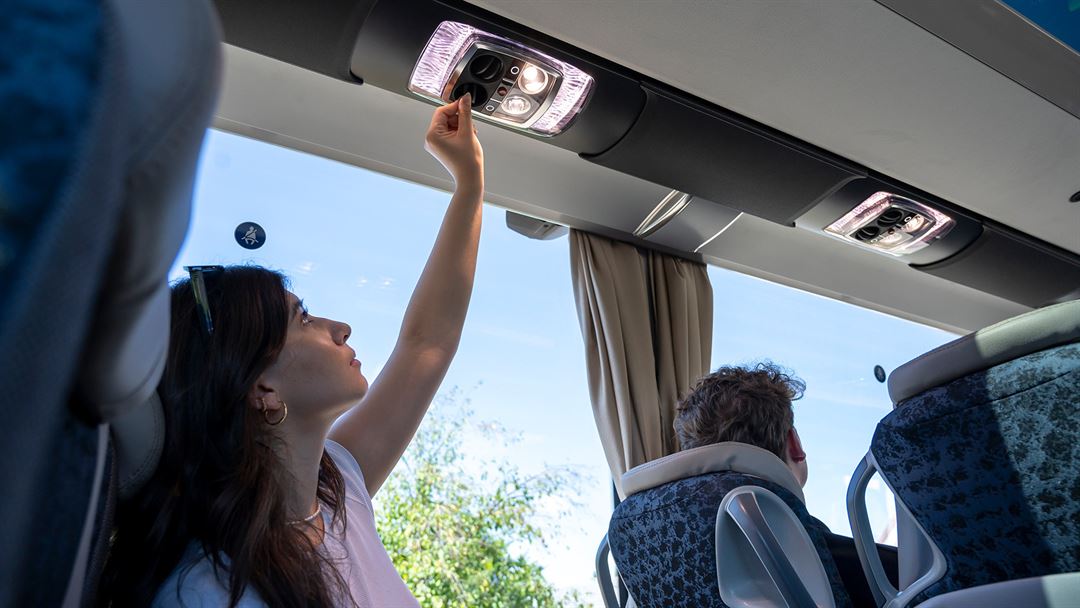20 Recommended Facts For Choosing Employee Transportation Sites
20 Recommended Facts For Choosing Employee Transportation Sites
Blog Article
Ten Most Important Tips To Help Select The Best Shuttle For Your Staff.
Here are 10 great suggestions on how to choose the appropriate size of vehicle and capacity when it comes to shuttle service for employees.
1. Calculate Employee Transportation Requirements
Start by conducting a thorough review of your employees' base in order to figure out the amount of employees who will utilize the shuttle service regularly. Think about factors such as the size of your workforce, work shifts and peak times for usage. This information can be used to determine the ideal vehicle size and the number of shuttles needed to allow for the number of passengers.
2. Select the Right Vehicle type
Choose a vehicle that is best suited for your shuttle service according to the amount of staff employed and specific needs. Minibuses or vans are possible options. Minibuses and vans are ideal for small groups because they are able to maneuver easily through small spaces. While larger buses are suitable for greater capacities. The design of the vehicle is important. It should have comfortable seating for employees who carry bags or equipment.
3. Evaluate Fuel Efficiency
Fuel costs could have a significant effect on the budget for shuttle services. When choosing a vehicle, consider efficient fuel options that will reduce operating costs. Hybrid and electric vehicles should also be considered, as they can provide long-term savings and align with sustainability goals. Examining the efficiency of fuel in different models can assist to make an educated decision that is able to balance capacity and cost-efficiency.
4. Take into consideration Accessibility Features
Make sure that the vehicles you use meet accessibility standards in order to accommodate disabled employees. This includes features such as elevators for wheelchairs, floors that are lower that make it easier for those with mobility issues to use the vehicle and special seating designated for them. This not only meets the legal requirements, it also creates a comfortable work environment.
5. Plan for Growth and Flexibility
As companies grow, size of the workforce may alter. When selecting vehicles, consider the potential for future growth. When selecting vehicles, take into consideration the potential for future growth.
6. Find out about safety ratings and features
Safety is the primary aspect of employee transportation. Find out about the safety features and ratings of vehicles prior to deciding on one. Make sure you choose a vehicle with the latest safety technology like anti-lock brakes, stability control and collision avoidance systems. Also, check that all safety standards are being adhered to by the vehicle in order to ensure the safety of employees while traveling.
7. Verify the reliability of maintenance and repair
Take into consideration vehicles that are known for their low maintenance costs and dependability. If your vehicle is always in need of repairs can cause disruptions to shuttle services and unhappiness among employees. Consider researching the reliability ratings of various types and makes, as well as setting up a schedule of maintenance to ensure your vehicles are in good working order. This will prolong their life.
8. GPS and Fleet Management Software
Your shuttle service can be more efficient by implementing GPS tracking software and fleet software. These tools allow real-time monitoring of vehicle locations and can improve routes based on the conditions of traffic, employee schedules, etc. In addition, software to manage fleets can assist track vehicle performance as well as fuel consumption and maintenance needs, ensuring that vehicles are being used effectively.
9. Employ feedback mechanisms for employees
Encourage your employees to provide feedback about vehicle comfort and capacity via surveys or suggestion boxes. The feedback they provide will help you identify issues with overcrowding and seating accessibility issues. Regularly reviewing this feedback allows for the necessary adjustments in choice of vehicle and service changes.
10. Budget for the total cost of ownership
TCO is the term used to describe the total cost of owning a vehicle. It includes the cost of fuel, depreciation, maintenance and insurance. TCO analysis helps in making an informed decision that balances initial investment with long-term operational expenses. If you look at all the costs associated with a vehicle, your organization will be able to choose one that fits within budgetary limitations and offers the required capacity and reliability.
Following these tips will help organizations select the right vehicles and manage their ability to provide employees with shuttle service. This will ensure an experience that is secure comfortable, and that meets the needs and requirements of employees. See the top rated employee shuttle for website recommendations including airport car service near me, airport shuttle bus, ground transportation from miami airport, luxury transportation, shuttle service near me, book a shuttle, shuttle service near me, reliable transportation, shared ride services, shuttles near me and more.
10 Top Tips On Budget And Cost Considerations For Corporate Events Transportation Services
Here are 10 suggestions to help you estimate the price and cost of an enterprise transportation service.
1. Perform a comprehensive Analysis of Costs
Complete a cost analysis for every aspect. This includes leasing a vehicle, the cost of fuel and driver wages as well as maintenance and insurance costs, as well as any other additional fees for permits and parking. Understanding the total cost can assist in creating an achievable budget.
2. Set up a Clear Budget Framework
Create a budget that clearly defines the amount of money your business will and is able to spend for transportation. This framework should take into consideration all identified costs and be flexible enough to deal with any unexpected expenses. Budgeting can help guide decisions and keeps transportation costs manageable.
3. Explore a variety of transportation options
Think about the various transportation choices to attend your event. This could include vans, shuttles or ride-sharing services. Consider factors such as comfort, capacity and convenience in assessing the cost of each transportation choice. The transportation budget can be optimized by choosing the option that is cost-effective and meets the attendees' needs.
4. How to Negotiate with Transportation Providers
You can negotiate contracts with transportation companies in order to obtain the most competitive price. Many transportation companies will offer discounts for corporate events or bulk bookings. A positive relationship could result in lower rates, better service and ultimately, a cost-effective experience.
5. Prepare for fuel prices in advance
Include fuel costs in the budget, as it can impact the total transportation costs. Estimate the number of trips and the distance required to reach the event. Talk to the transport service provider that offers fuel efficient options to lower costs.
6. Include Contingency Funds
Set aside a portion of contingency funds to cover unexpected expenses. Transport can be unpredictable. Car breakdowns, as well as additional trips may occur. Contingency fund funds help you deal with these issues without having to spend too much or compromise service quality.
7. Take into consideration Group Discounts and Packages
You can save money by searching for discounts or specials provided by transportation companies. Many transportation companies offer discounts for big corporate events and groups. They can provide a significant saving. Ask about packages that offer additional services at discounted rates like additional vehicles or on-site coordination.
8. Monitor and record expenses
Maintain a close watch on all transportation-related expenses throughout the planning and execution phases. The tracking of costs in real-time can be done by using spreadsheets, budgeting tools or other programs. Monitoring expenditures can help identify areas for savings and ensures the budget stays in line.
9. Gather Feedback for Future Budgeting
After the event, gather feedback from guests about their transportation experience and any associated costs. Reviewing the feedback of attendees can give insight into the effectiveness of transportation services as well as inform future budgeting. Recognizing what was successful and what wasn't will help to improve budgets for future events.
10. Calculate the Total Cost of Ownership
Take into consideration the total cost of ownership (TCO), when evaluating transportation options. The total cost of ownership (TCO) comprises the purchase or rental price as well as other ongoing expenses like insurance, maintenance and depreciation. Understanding TCO will allow you to make educated decisions, taking into consideration the initial cost and the long-term financial consequences.
By following these tips, organizations can effectively manage costs and make informed budget choices for corporate event transportation. The budget should not just assist in addressing transportation needs however, it will also contribute to the enjoyment and success of the occasion. Proper budgeting and cost management improve the reputation of the company and demonstrate commitment to efficiency and responsibility. Check out the top rated more tips here for corporate event transportation for website info including mgt logistics, transportation companies, company transport, transportation logistics services, services and logistics, luxus transportation, pace transportation, solution transport, business logistics, intl logistics and more.